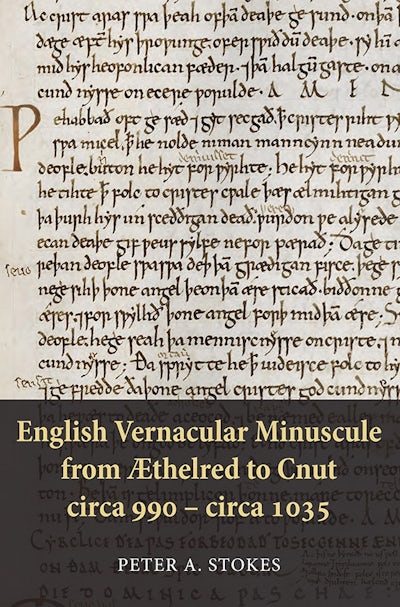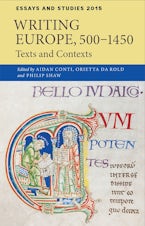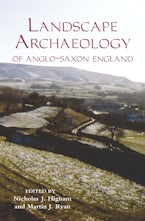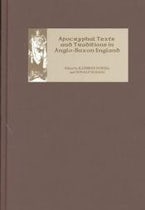
Title Details
309 Pages
23.4 x 15.6 cm
20 b/w, 1 line illus.
Series: Pubns Manchester Centre for Anglo-Saxon Studies
Series Vol. Number:
14
Imprint: D.S.Brewer
English Vernacular Minuscule from Æthelred to Cnut, circa 990 - circa 1035
- Description
- Contents
- Reviews
First full-scale examination of the phenomenon of the English Vernacular minuscule, analysing the full corpus and giving an account of its history and development.
A new, distinct script, English Vernacular minuscule, emerged in the 990s, used for writing in Old English. It appeared at a time of great political and social upheaval, with Danish incursions and conquest, continuing monastic reform, and an explosion of writing and copying in the vernacular, including the homilies of Ælfric and Wulfstan, two different recensions of the Anglo-Saxon Chronicle, two of the four major surviving manuscripts of Old English poetry (the "Beowulf" and "Junius" books), and many original royal and ecclesiastical diplomas, writs and wills. However, although these important manuscripts and documents have been studied extensively, this has tended to be in isolation or small groups, never before as a complete corpus, a gap which this volume aims to rectify. It opens with the historical context, followed by a thorough reexamination of the evidence for dating and localising examples of thescript. It then offers a full analysis of the complete corpus of surviving writing in English Vernacular minuscule, datable approximately from its inception in the 990s to the death of Cnut in 1035. While solidly grounded in palaeographical methodology, the book introduces more innovative approaches: by examining all of the approximately 500 surviving examples of the script as a whole rather than focussing on selected highlights, it presents a synthesis ofthe handwriting in order to identify local practices, new scribal connections, and chronological and stylistic developments in this important but surprisingly little-studied script.
Peter Stokes is Senior Lecturer at King's College London.
A new, distinct script, English Vernacular minuscule, emerged in the 990s, used for writing in Old English. It appeared at a time of great political and social upheaval, with Danish incursions and conquest, continuing monastic reform, and an explosion of writing and copying in the vernacular, including the homilies of Ælfric and Wulfstan, two different recensions of the Anglo-Saxon Chronicle, two of the four major surviving manuscripts of Old English poetry (the "Beowulf" and "Junius" books), and many original royal and ecclesiastical diplomas, writs and wills. However, although these important manuscripts and documents have been studied extensively, this has tended to be in isolation or small groups, never before as a complete corpus, a gap which this volume aims to rectify. It opens with the historical context, followed by a thorough reexamination of the evidence for dating and localising examples of thescript. It then offers a full analysis of the complete corpus of surviving writing in English Vernacular minuscule, datable approximately from its inception in the 990s to the death of Cnut in 1035. While solidly grounded in palaeographical methodology, the book introduces more innovative approaches: by examining all of the approximately 500 surviving examples of the script as a whole rather than focussing on selected highlights, it presents a synthesis ofthe handwriting in order to identify local practices, new scribal connections, and chronological and stylistic developments in this important but surprisingly little-studied script.
Peter Stokes is Senior Lecturer at King's College London.
Introduction
Background
Attributions of Origin
Scribal Change in Bookhands and Charters: The 'Tall and Narrow' Hands
Scribal Continuity in Bookhands and Charters: The 'Square Influenced' Hands
Glosses and Scribbles
Conclusion: Change and Continuity in Early English Vernacular Minuscule
Appendix: List of Scribal Hands
Glossary
Background
Attributions of Origin
Scribal Change in Bookhands and Charters: The 'Tall and Narrow' Hands
Scribal Continuity in Bookhands and Charters: The 'Square Influenced' Hands
Glosses and Scribbles
Conclusion: Change and Continuity in Early English Vernacular Minuscule
Appendix: List of Scribal Hands
Glossary
"A major contribution to our knowledge of pre-1066 English cultural and ecclesiastical history." LIBRARY
"[A]n authoritative assessment of the most important scribal hand in late Anglo-Saxon England, as well as being a major statement of method." YEAR'S WORK IN ENGLISH STUDIES
"[A] superb study...rich in learning and never less than cogently argued.... In sum this is an exemplary study." AMARC NEWSLETTER
"Stokes's book is a highly technical introduction to the origins and developments of Anglo-Saxon scripts during this most productive half century, which will be most helpful to scholars and students using digital libraries for scholarly projects." THE MEDIEVAL REVIEW
Hardcover
9781843843696
April 2014
$125.00 / £85.00
Ebook (EPDF)
9781782042402
April 2014
£24.99 / $29.95
Title Details
309 Pages
2.34 x 1.56 cm
20 b/w, 1 line illus.
Series: Pubns Manchester Centre for Anglo-Saxon Studies
Series Vol. Number:
14
Imprint: D.S.Brewer
















